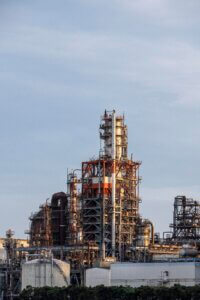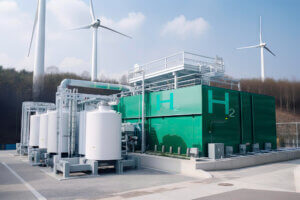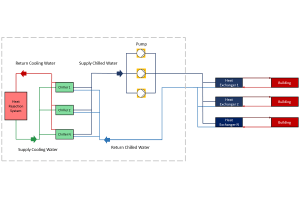Introduction
The two-phase flow in the finger pipe of a finger-type slug catcher is analyzed using CFD techniques. When the fluid flow in the inlet header manifold is evenly distributed among the different fingers, it is necessary to obtain stratified flow to promote liquid separation.
Analysis
The two-phase flow in the separation section is simulated to study the amount of liquid at the intersection with and through the gas riser. Dynaflow performed a detailed two-phase flow analysis by means of Computational Fluid Dynamics using the commercial Ansys CFX® code. Shadow calculations are successfully performed using the open-source framework OpenFOAM© code.

Results
The two-phase flow inside the finger pipe has been investigated for several operating cases. It is shown that the gas flows back from the barrel to the gas riser, as opposed to there being no gas flow in the storage section. If velocities become too high and the flow too turbulent, this could result in gas carrying liquid from the storage section back through the gas riser. However, this does not occur for these flow profiles because the velocities are sufficiently low.
The accurate CFD simulations provide insight in how the interface between the natural gas and the liquid condensate behaves.
The results show that the maximum percentage of liquid condensate existing through the gas riser is sufficiently low for all operating cases, well below 1%. Therefore, the design configuration of the fingers leads to an efficient and successful operation of the proposed slug catcher, for all considered operating cases.




